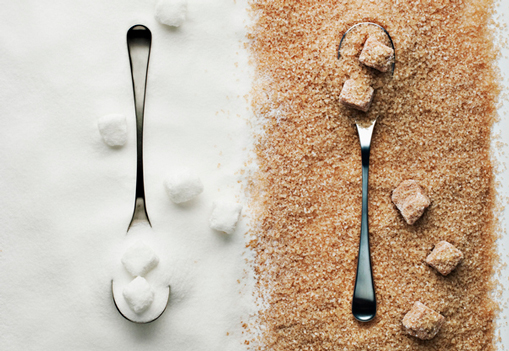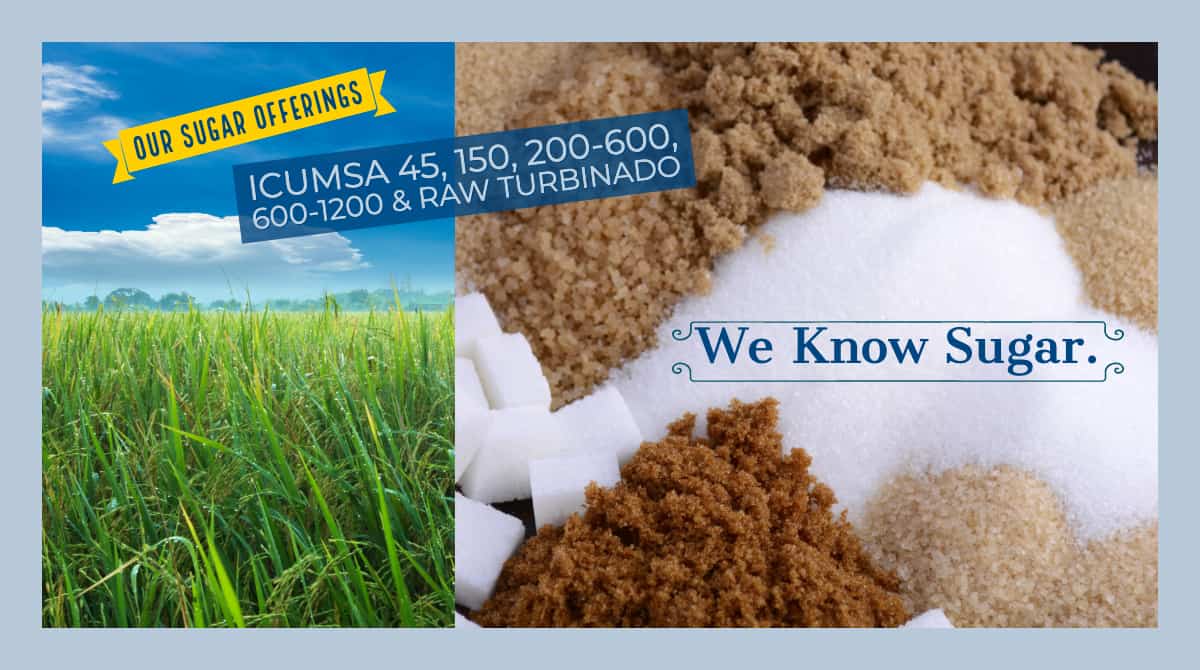The Environmental Impact of sugar cane products and How We Can Adapt
Unveiling the Manufacturing Keys Behind Sugar Cane and Its Diverse Series Of Products
The manufacturing trip of sugar cane is complex and multi-faceted. It starts in the areas, where cautious harvesting methods established the phase for optimal sugar extraction. The procedure includes a number of phases, consisting of juice extraction and refining - sugar cane products. Nonetheless, sugar cane's prospective prolongs much past simple sweetness. Innovations in handling and lasting methods are reshaping its role in contemporary sectors. What exists in advance for this versatile crop? The solutions may shock those curious about its future
The Journey of Sugar Cane: From Area to Factory

As sugar cane guides carefully in the tropical breeze, it begins a transformative journey from area to factory. The vibrant green stalks, rich in sucrose, are grown under ideal conditions, gaining from ample sunlight and rainfall. Farmers thoroughly keep an eye on the development, making sure the plants reach their peak maturity, which is crucial for making best use of sugar content.Once grew, the cane is gotten ready for harvesting, where its fibrous structure holds the pledge of wonderful products. The journey continues as the stalks are moved to processing centers, where they go through a series of careful steps. At the manufacturing facility, the cane is washed, shredded, and pushed to extract the juice. This juice is after that clarified and evaporated, leading the way for crystallization. Each stage of this trip is vital, as it ultimately figures out the top quality of the sugar and other products originated from this functional crop.
Harvesting Techniques: The Primary Step in Production
Harvesting sugar cane requires precision and ability, as the timing and strategy straight impact the quality of the last product. The process normally begins with determining the excellent harvest, which is important; sugar web content peaks simply prior to the plant reaches full maturation. Farmers frequently count on experience and agricultural indications to decide when to harvest.Two main methods dominate the collecting landscape: guidebook and mechanical approaches. Hand-operated harvesting, though labor-intensive, permits for mindful option of stalks and decreases damage. Employees utilize machetes to reduce the cane near the base, making sure the stalks remain undamaged for processing.Mechanical harvesting, on the other hand, makes use of specialized equipment to reduce and accumulate the cane rapidly. While this method significantly increases effectiveness, it may bring about greater levels of particles and reduced sugar content. Ultimately, the picked technique affects not just the amount however also the high quality of sugar cane delivered to processing facilities.
The Removal Refine: Unlocking the Sweet taste
The extraction procedure is essential for changing collected sugar cane right into sweet juice. Different methods of juice extraction can significantly affect the high quality and yield of the last product. Comprehending these methods is important for making the most of the advantages of sugar cane manufacturing.
Harvesting Strategies Explained
Releasing the sweet taste of sugar cane starts with precise harvesting techniques that assure maximum yield and high quality. The procedure generally entails cutting the cane at ground level, guaranteeing very little damage to the plant and enabling regrowth. Harvesters usually use machetes or specialized devices, depending upon the scale of the procedure. Timing is important; gathering happens when the sugar material reaches its optimal, generally throughout dry seasons. Furthermore, employees must be trained to identify the most effective stalks, staying clear of those that are too old or diseased. Effective transportation to refining centers is likewise crucial, as delays can cause sugar deterioration (sugar cane products). These careful methods eventually lay the foundation for generating top notch sugar and its diverse by-products
Juice Extraction Methods
Juice removal is a crucial action in transforming sugar cane into its pleasant essence. This procedure commonly includes a number of techniques, each designed to successfully extract the sugary fluid from the fibrous stalks. One of the most typical method is milling, where the sugar cane is crushed in between heavy rollers to launch the juice. An additional method is diffusion, which uses hot water to liquify the sugar from the cane fibers, making it a much more reliable choice for large operations. In addition, some producers use screw presses, which use mechanical pressure to essence juice. After removal, the juice goes through clarification to eliminate contaminations before further processing. Each method shows the industry's emphasis on optimizing return and ensuring high-grade sugar production.
Refining Sugar: Transforming Raw Cane Into Granulated Gold
The refining process is important for transforming raw cane sugar right into the pure, granulated item customers acknowledge. sugar cane products. This entails a series special info of extraction and purification steps to eliminate contaminations, followed by condensation and drying methods that enhance the sugar's top quality. Understanding these approaches discloses the intricate transformation from cane to the golden granules that sweeten numerous foods and beverages
Removal and Filtration Refine
An important stage in the sugar production journey involves the extraction and filtering of juice from newly harvested sugar cane. This process begins with squashing the cane to release its wonderful juice, usually making use of large rollers or mills. The extracted juice contains not only sugar but likewise pollutants, including fibers and mud. To ensure the juice is appropriate for additional refining, it goes through a purification process. This entails passing the juice via numerous filters and clarifiers to get rid of strong bits and undesirable products. Chemicals such as lime might be included in assist in the information procedure. The result is a clear, raw cane juice that acts as the foundation for creating polished sugar, ready for subsequent stages of handling.

Condensation and Drying Techniques
After the extraction and purification procedures produce clear raw cane juice, the following action in sugar production is condensation. This procedure includes boiling the juice to vaporize water, enabling sugar molecules to create crystals. As the liquid thickens, it gets to supersaturation, motivating sugar to take shape. The mixture is then cooled down, promoting further crystal development. Once condensation is full, the sugar crystals are separated from the continuing to be syrup via centrifugation.The last entails drying, where the crystals are subjected to warm air to get rid of recurring moisture. This action is essential, as it guarantees the product accomplishes the preferred granulation and rack stability. The outcome is pure, granulated sugar, ready for product packaging and distribution.
Past Sweet Taste: Diverse Products From Sugar Cane
While sugar cane is primarily recognized for its pleasant taste, its flexibility prolongs much past simple sweet taste. This resilient plant acts as the resource for a myriad of products that accommodate varied industries. Ethanol, stemmed from sugar cane fermentation, plays a vital function in renewable resource, functioning as a cleaner choice to nonrenewable fuel sources. Furthermore, molasses, a byproduct of sugar refining, is made use of in animal feed, along with in cooking and fermentation processes.Sugar cane's fibrous deposit, understood as bagasse, is not thrown away; it is transformed into eco-friendly product packaging materials and acts as a biomass gas resource. Numerous sugars and syrups gotten from sugar cane discover applications in the food and drink industry, adding to flavoring and preservation. The plant's fallen leaves can be used for thatching, while its juice is consumed as a renewing drink in numerous societies. Subsequently, sugar cane exhibits agricultural potential past its sugary credibility.
Innovations in Sugar Cane Processing
As developments in technology proceed to improve numerous sectors, sugar cane processing is experiencing a substantial improvement. Modern developments, consisting of automated harvesting and precision farming, are enhancing performance and return. Drones and sensors monitor crop wellness, permitting farmers to enhance irrigation and nutrient application, inevitably improving productivity.In processing centers, cutting edge equipment and devices streamline procedures. Developments such as chemical processing more tips here and advanced filtering strategies enhance the removal of sugar while minimizing waste. Additionally, the adoption of real-time data analytics allows producers to monitor procedures very closely, guaranteeing top quality control and decreasing downtime.Biotechnology is additionally playing a vital duty; genetic engineerings improve sugar cane's resistance to bugs and ecological stressors. These advancements not just add to greater sugar yields yet also promote the production of diverse byproducts from the cane, expanding its industrial applications. In general, these developments are leading the method for a more reliable and look at here now lasting sugar cane handling sector.
The Future of Sugar Cane: Sustainability and Bioproducts
The future of sugar cane production is progressively linked with sustainability and the growth of bioproducts. As global demand for green alternatives increases, the sugar cane market is pivoting towards techniques that lessen ecological influence. Developments in growing strategies, such as accuracy agriculture and integrated parasite management, aim to improve yield while minimizing source consumption.Furthermore, sugar cane is being discovered as a raw product for biofuels, bioplastics, and various other lasting products. These bioproducts not only provide a sustainable choice to conventional nonrenewable fuel sources and plastics however likewise add to a circular economic situation by utilizing waste materials.Research and advancement in biotechnology are leading the method for improved sugar cane ranges that need less water and fertilizers, further advertising sustainability. By welcoming these innovations, the sugar cane sector can safeguard its future while resolving important ecological difficulties, demonstrating its possible as a foundation of lasting advancement.
Regularly Asked Concerns
What Are the Environmental Impacts of Sugar Cane Farming?
The environmental effects of sugar cane farming include logging, dirt deterioration, and water contamination. Additionally, using chemicals can damage biodiversity, while monoculture methods decrease environment resilience, posturing long-term sustainability challenges for agricultural techniques.

How Does Sugar Cane Contrast to Other Sugar Nutritionally?
Sugar cane, rich in carbs, gives power but does not have essential nutrients contrasted to choices like honey or maple syrup, which provide minerals and vitamins. Its high glycemic index additionally raises issues over blood sugar spikes.
What Are the Wellness Perks of Consuming Sugar Cane Products?
The health benefits of consuming sugar cane products consist of enhanced digestion, enhanced power degrees, and potential antioxidant homes. Furthermore, they may support hydration and offer important minerals and vitamins, contributing positively to total well-being.
How Is Sugar Cane Waste Utilized After Processing?
After processing, sugar cane waste is used in various methods, consisting of biofuel production, animal feed, and natural plant foods. This lasting approach decreases environmental influence while making the most of resource effectiveness within the sugar sector.
What Are the Historic Beginnings of Sugar Cane Cultivation?
